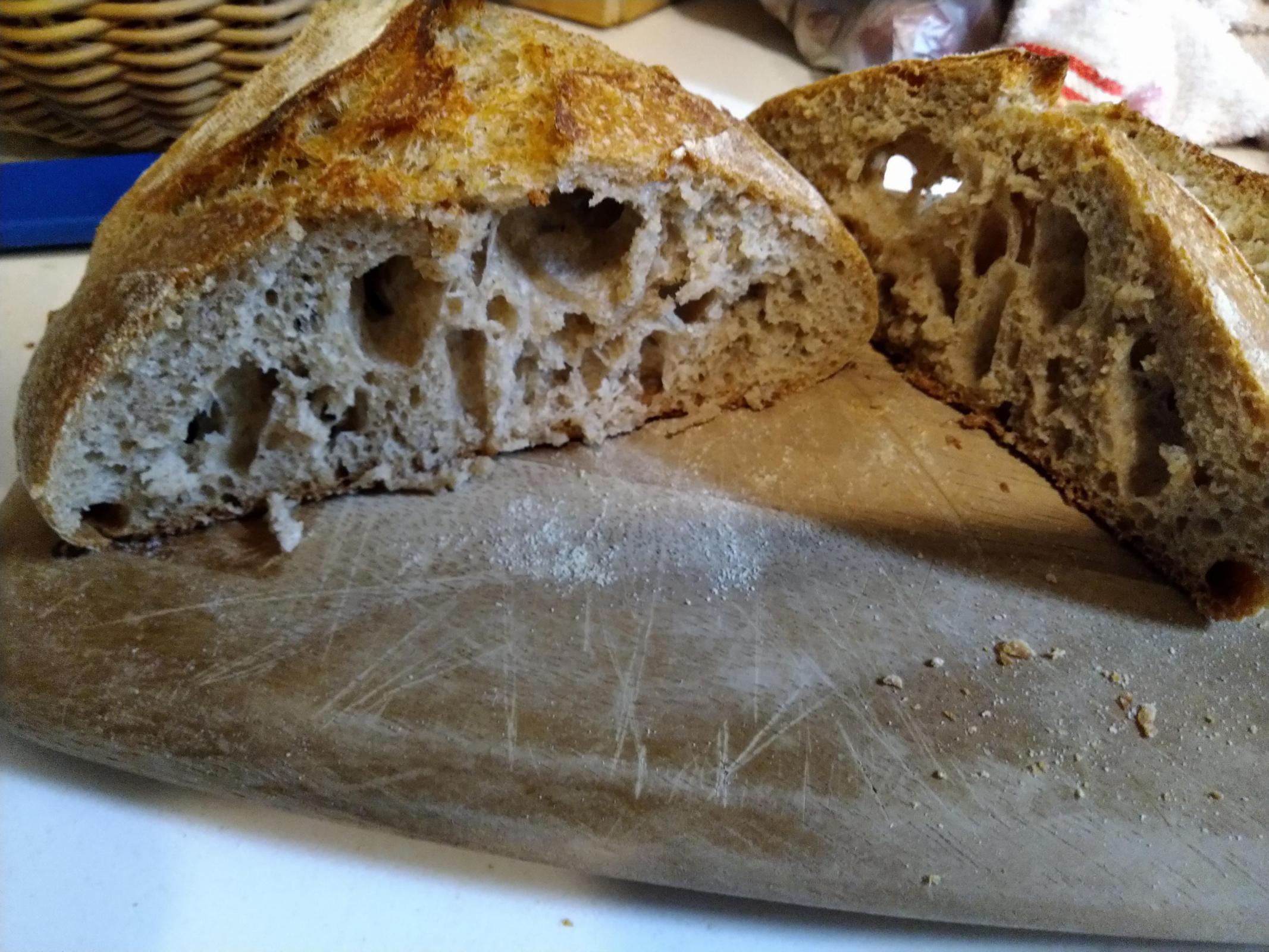I have another experiment using minimal amount of starter. This time I have not built any levain, and mixed 1 g starter with other ingredients. I tried to adjust the process to my schedule, which is mix in the morning, bulk ferment during the day, shape in the evening, retard overnight and bake in the following morning.
The measurements were 1 g starter, 220 g flour, 165 g water, and 3 g salt. The flour was 55% bread flour and the rest a mix of dark rye, red fife and whole wheat. Mixed in the morning (dissolved starter in water first), applied two stretches and folds, and after one hour placed the dough in the fridge for bulk fermentation. Roughly 12 hours later, removed the dough from the fridge without much noticeable signs of fermentation. Let it rest on the counter at room temperature for another 5 hours with two extra stretches and folds. Finally some signs of bulk fermentation showed up, so I shaped as a boule and placed it in the fridge for another 5 hours retarding (it was time to go to bed). Baked in the morning straight from the fridge to the results below.
There has been few holes, even though not evenly distributed. Oven spring was reasonable but nothing spectacular. The crumb was quite soft and the crust baked light. Flavor showed some good nuttiness and a subtle tang, just the way sourdough should be. I have done this experiment by building a 5%-flour levain with superior results as compared to using only 1 g starter without any levain build.
Using 1 g starter without building a levain seems to work, but I need to tweak the method for my schedule and to improve the results.

The bulk fermentation is too slow in the fridge due to the small amount of starter. However, I have tried to ferment it in room temperature for the same time. The result was a failure because the temperature is being too high and the long fermentation at room temperature seems to be damaging the dough structure. The result was a pancake as shown below (with some signs of over proofing too). Additionally, the bread was too sour due to the long fermentation at high temperature. I did not like the dough structure after the long fermentation. It was almost too wet and soup-like, so the flat bread resulted.
I still want to do another final test at room temperature, which will be making a stiff dough with low hydration, fermenting at room temperature, and then provide a second hydration in the evening. I just want to slow down the fermentation in room temperature so the dough structure is not compromised to a great extension.
